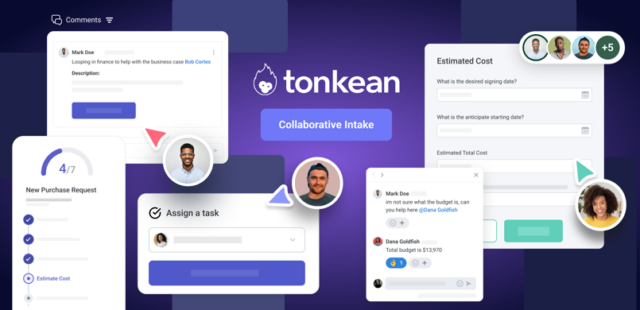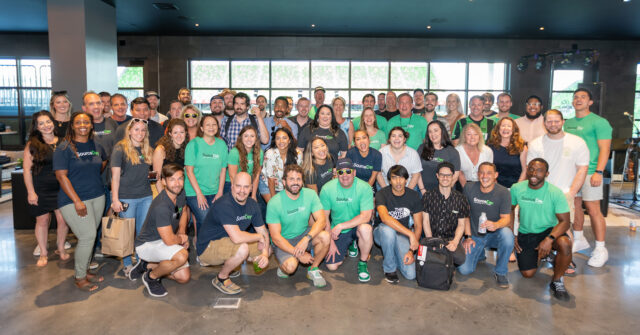“When something new arrives on the scene, people have a tendency to immediately think of the worst-case scenario.”
Maarten van der Borden is a Customer Transformation Director at Celonis. As AI gets increasingly complex and advanced, there are concerns from some sections of the workforce that robots will take human jobs in procurement. Indeed, one of the biggest draws of automation is the cost savings and efficiency it brings, with AI able to complete some tasks almost instantly. But van der Borden challenges that notion and believes technology should be used as an enabler.
AI’s impact on jobs
“AI will, in my opinion, not replace anyone anytime soon,” he reveals. “What it will do is make life easier and change the way we operate. In the late 90’s, we couldn’t envision what having a mobile phone would be like. When those were first introduced, we thought how annoying it would be that you would always be reachable. Now we can’t imagine living without a phone.
“I don’t envision the elimination of procurement positions due to AI. Rather, a significant shift may occur in the transactional aspects of process analytics. Currently, individuals proficient in creating complex Excel macros or adept at extracting and transforming data into actionable insights are highly valued. These roles are likely to undergo changes, but this should be seen as an opportunity for enhancement, not a threat. It’s crucial to recognise this. My belief is that AI won’t be replacing jobs, particularly in procurement where human involvement is key. The role of technology should be to empower and improve processes in procurement, not to replace the human element.”

The journey
Over the years, Van der Borden has distinguished himself through a series of impactful transformations and strategic developments, primarily at the nexus of IT, business operations, and finance. His journey has been marked by the successful management of large-scale programs, where his ability to engage cross-functional teams and collaborate with stakeholders at all organisational levels has consistently led to the achievement of key goals. Notably, he has a history of taking on complex and challenging projects, steering them from concept to completion under stringent conditions. This track record has established him as an influential change agent, known for transforming underperforming organizations into models of high performance and efficiency.
Having began his career in the Dutch Military, he experienced a similar journey to many procurement practitioners. Van der Borden fell into the space by a “happy accident” and never left.
He shares, “I didn’t know much about procurement initially, but I quickly grew to love it.” His journey led him to DS Smith, a major packaging organisation, where he successfully spearheaded a comprehensive global procurement transformation. Subsequently, he transitioned to head the finance transformation within the same company. In this role, he sought a tool that could effectively navigate the unique challenges of procurement compared to finance.
“I needed something that would show me how our financial processes really ran. It meant finding the most impactful inefficiencies and developing an action plan to deal with them.”
Celonis today
This search brought him to Celonis’ process mining capability, a product that resonated with him so profoundly that he decided to join the company. “Right now, I am a Customer Transformation Director at Celonis, which means I help our customers organise themselves around this solution because I firmly believe implementing a tech solution by itself doesn’t do anything. We will always need the human element to make the change and create value, based on the insights tech provides. I’m very happy to be here.”
Today, Celonis is the global leader in process mining, providing companies with a modern way to run their business processes entirely on data and intelligence. The firm pioneered the process mining category more than a decade ago when it first developed the ability to automatically X-ray processes, find inefficiencies and implement immediate, targeted, and automated action to resolve them.

Gen AI drive
Procurement is in a transformative moment. At DPW Amsterdam, generative AI was the buzzword on attendees’ lips everywhere you looked. For van der Borden he acknowledges how rapidly the space is changing as a result of an increased influence of digital tools.
“To me, the first big thing to realise when we talk about gen AI is the democratisation of data and process analytics,” explains van der Borden. “I think what’s really important is that procurement realm to me is a prime example of where gen AI can have a huge impact. I think what gen AI will do is open up the capabilities of analytics to a much wider audience than today. People who may previously have trusted some Excel sheets or PowerPoint slides presented to them to make decisions can now freely explore, or even converse with their own data and make informed decisions themselves. You start to build a community of data analysts rather than just having consumption of data analytics. That to me is the big game changer that gen AI is actually providing procurement with.”
Procurement’s perception

By its own common admission, procurement used to be boring. A function hidden out of sight and kept far away from the c-suite. Now, it’s front and centre, firing on all cylinders. Indeed, the Covid pandemic helped drive it towards the top of the agenda, in addition to other enablers such as transformation and ESG. For van der Borden, he believes procurement is beginning to shake off that old skin and be seen as more of a strategic function.
“We’ve received a bad reputation in the past because the impact has not always been clear,” he tells us. “Some analysis that people do on procurement as a strategic function is to ask what’s the real impact? Yeah, you manage the supply and demand but as long as I have my blue ball point where and when I need it, you’re doing a good job. If things start to fall over then procurement used to get the blame. What I’m really happy to see is that more and more CEOs are seeing procurement as a strategic function, not only driving value in the financial domain but also more and more as the primary contributors to a more sustainable future and the guardians of our corporate brands.
An evolution
“There’s been a noticeable evolution in procurement, particularly in the merging of processes like source-to-pay, procure-to-pay, and purchase-to-pay. Our definitions in these areas haven’t always been crystal clear. However, when you delve into purchase-to-pay, it’s apparent that this is where the transactional activities occur. Due its very transactional nature, this phase is measurable and reveals the outcomes of our upstream actions in sourcing. I’ve observed that these areas, despite often being managed by separate divisions or functions, are intrinsically linked. The transactional aspects are commonly seen in shared services, while the sourcing aspects represent traditional procurement.
“Bridging these two areas, in my view, is a significant shift. This is where technology truly demonstrates its value. By integrating and examining the transactional processes to understand their shortcomings, we can trace back to the root causes, often found in sourcing. This integration is fascinating to me. It allows us to assess the real impact of our efforts.”











